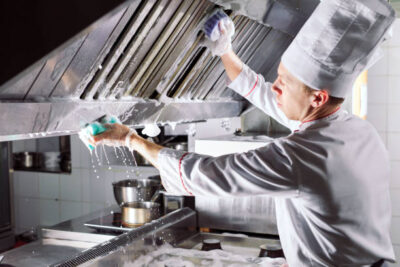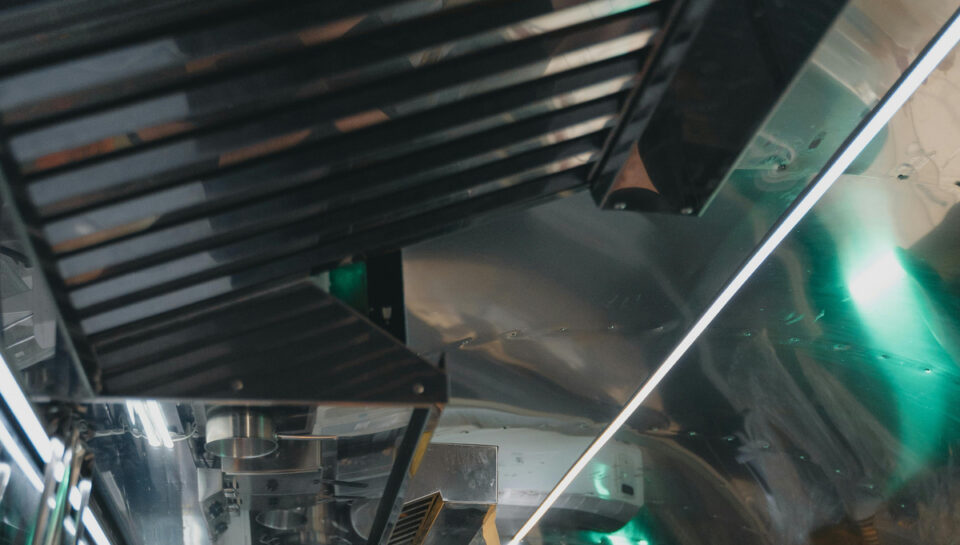How to Clean a Kitchen Hood: A Complete Guide for Commercial Kitchens
Kitchen hoods are essential in any commercial kitchen, helping to ventilate your space and remove smoke, grease, and airborne contaminants. To keep your hood system running efficiently and safely, regular cleaning and maintenance are a must. This guide walks you through everything you need to know about cleaning kitchen hoods, filters, grease traps, fans, and ducts.
Why Kitchen Hood Cleaning Matters
A clean kitchen hood system supports a safe, functional, and odor-free cooking environment. Grease buildup can lead to poor ventilation, unpleasant smells, and even fire hazards. Regular cleaning not only protects your staff and customers but also helps extend the life of your equipment and keeps you compliant with health and safety regulations.
Commercial Kitchen Hood Cleaning Steps
1. Exhaust Hood Cleaning
The exhaust hood removes smoke, heat, and particles from your kitchen. Here’s how to clean it:
- Remove parts: Detach grease traps, filters, and fans for separate cleaning.
- Mix cleaning solution: Combine warm water and a liquid degreaser in a bucket.
- Scrub interior: Use a non-abrasive scrub pad or brush to clean the interior surfaces.
- Wipe down: Rinse with a damp cloth and dry with a towel.
- Clean exterior: Repeat the same process on the outside of the hood.
- Air dry: Let the hood air dry before reassembling components.
 2. Cleaning Grease Trap Screens
2. Cleaning Grease Trap Screens
Grease traps prevent fats and oils from entering your ventilation or plumbing. To clean:
- Remove traps: Take them out of the hood.
- Scrape off grease: Collect grease in a separate container (never pour it down the drain).
- Scrub traps: Use a soft brush or pad to remove stubborn buildup.
- Soak in solution: Place traps in a sink with warm water and degreaser (follow label instructions).
- Rinse and dry: After 5–10 minutes, remove, rinse, and allow to air dry before reinstalling.
3. Kitchen Hood Filter Cleaning
Filters capture airborne particles and need frequent cleaning to stay effective.
- Remove filters: Take out the filters from the hood.
- Prepare degreaser mix: Fill a sink or tub with warm water and degreaser (check label for dilution).
- Soak filters: Let them soak for 2–3 hours or overnight if heavily soiled.
- Scrub and rinse: Gently scrub with a cloth and rinse thoroughly.
- Dry completely: Allow them to air dry before putting them back.
4. How to Clean Kitchen Hood Fans (Blowers)
Fans are the core of the exhaust system and should be cleaned thoroughly.
- Detach fan: Remove it from the hood.
- Remove blade cover: Use a drill if needed.
- Take out blades: Note which blade goes where, especially with multiple fans.
- Soak blades: Use warm, soapy water.
- Dry and reassemble: Dry blades with a microfiber cloth or air dry. Reattach and reinstall the fan.
5. Duct Cleaning
Some ducts are hard to reach and may require professional cleaning. For accessible ducts:
- Mix cleaning solution: Combine warm water and degreaser.
- Scrub interior and exterior: Use a soft brush or pad.
- Dry completely: Allow all surfaces to air dry thoroughly.
Kitchen Hood Cleaning Services
If you prefer not to clean the system yourself, professional kitchen hood cleaning services are available. These specialists bring the tools and expertise to thoroughly clean all components of your system. While costs can be higher, professional services may be worth it for larger kitchens or difficult-to-clean systems.
Cost of Professional Cleaning
Costs depend on factors like:
- Hood system size and condition
- Number of hoods and fans
- Crew size and service duration
- Kitchen location and layout
Cleaning can take up to 4 hours, depending on complexity.
How Often Should You Clean a Kitchen Hood?
While a general rule is every 3 months, cleaning frequency depends on:
- Kitchen activity: Busier kitchens require more frequent cleanings.
- Menu type: Greasy or smoky foods lead to faster buildup.
- Equipment used: Some appliances produce more residue and require more frequent hood maintenance.
Always refer to local fire and health codes for specific cleaning regulations.







